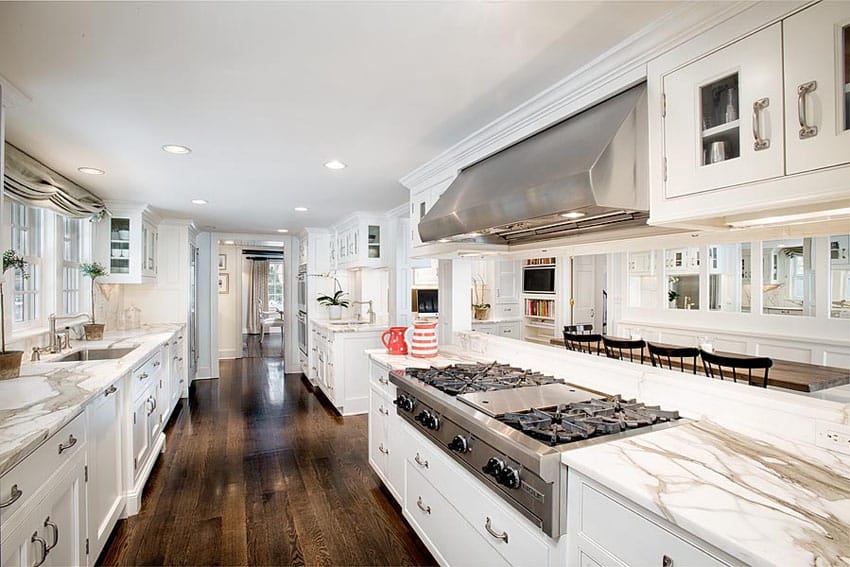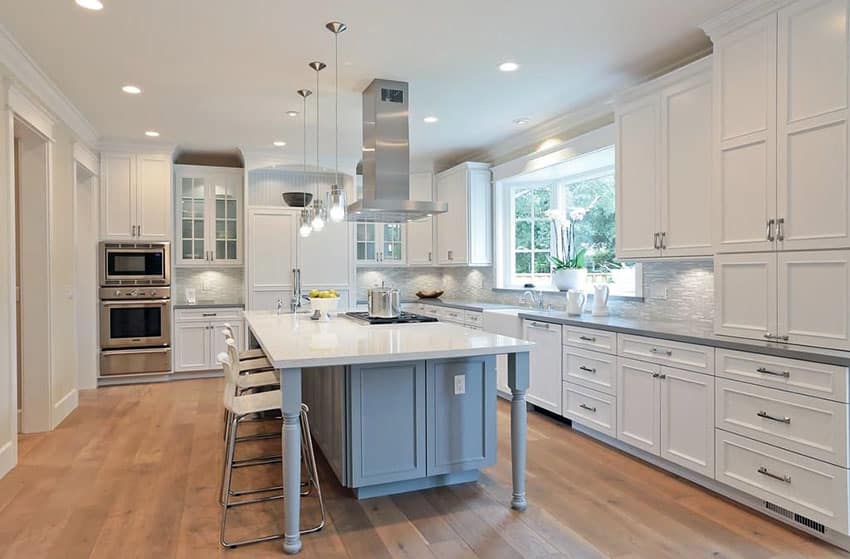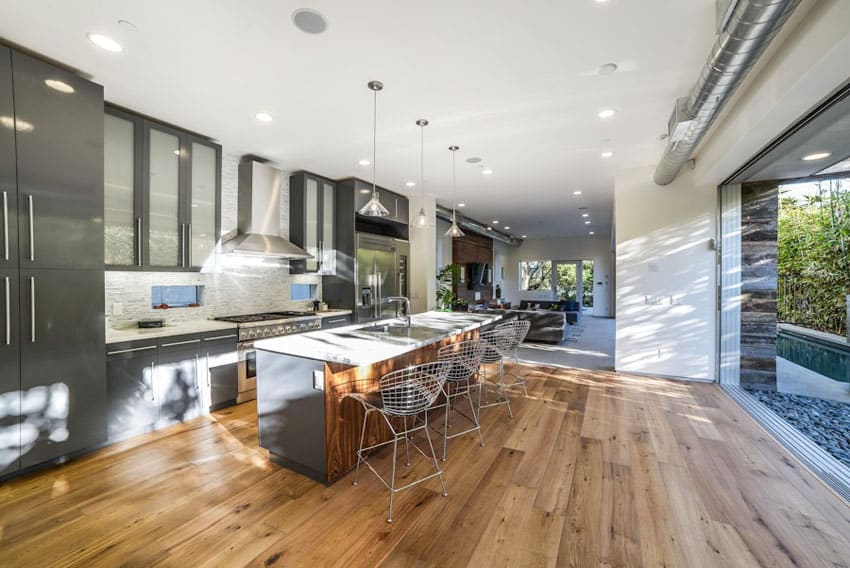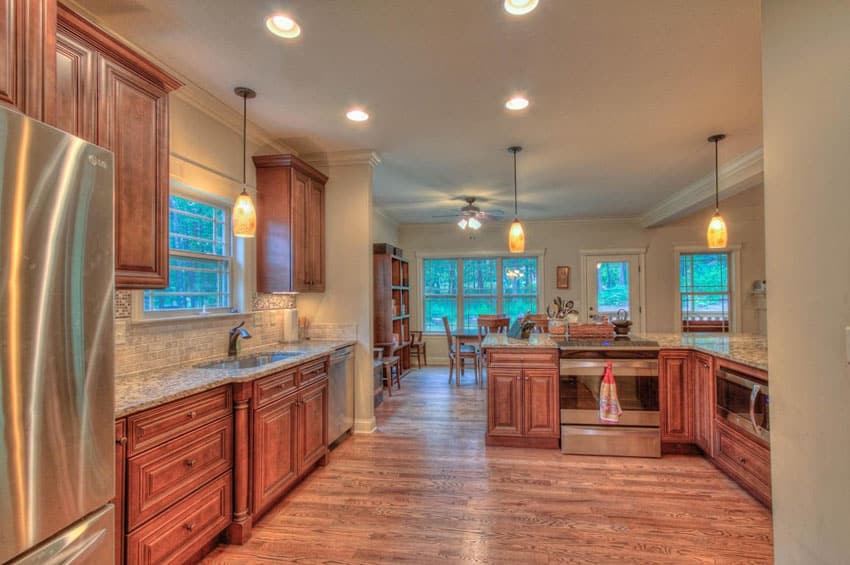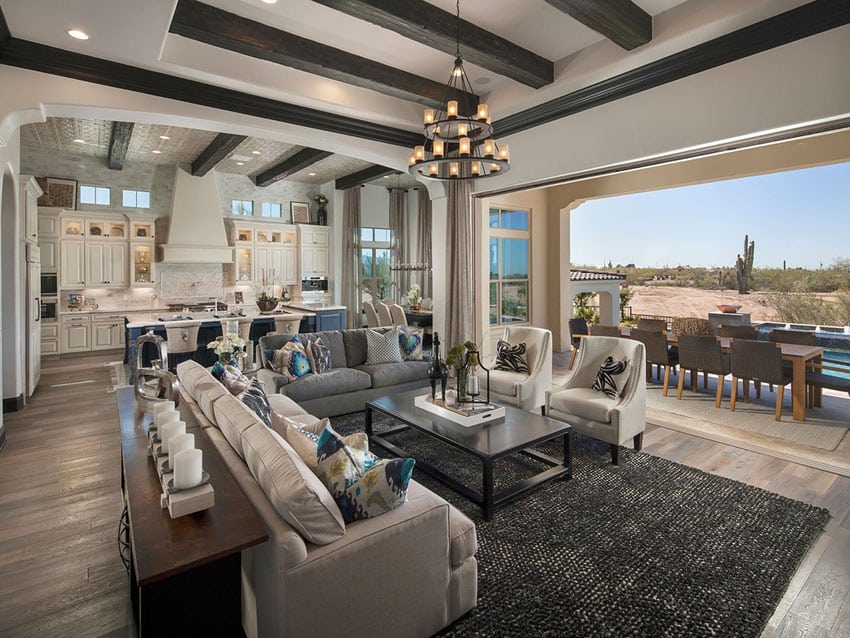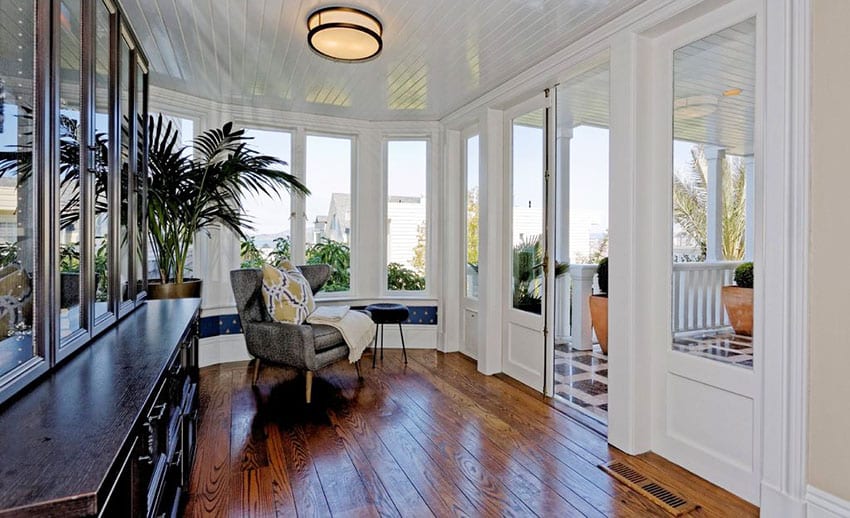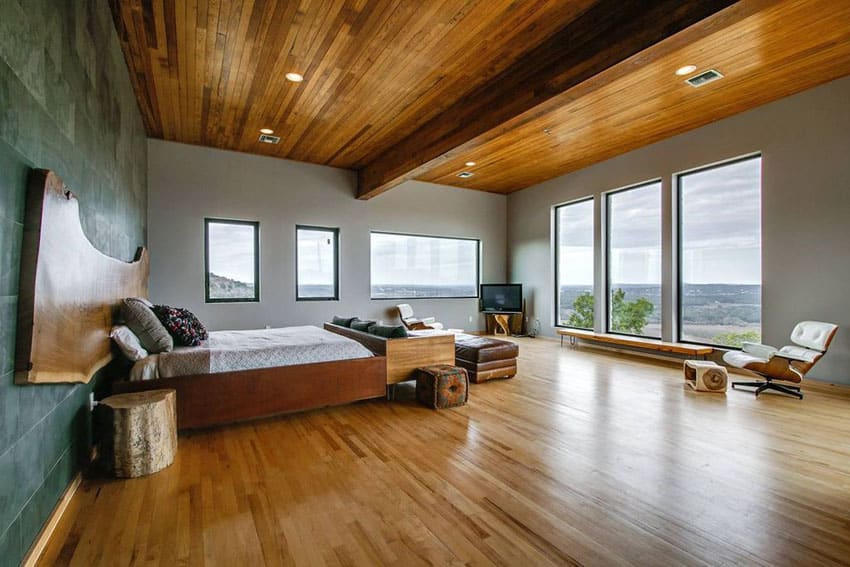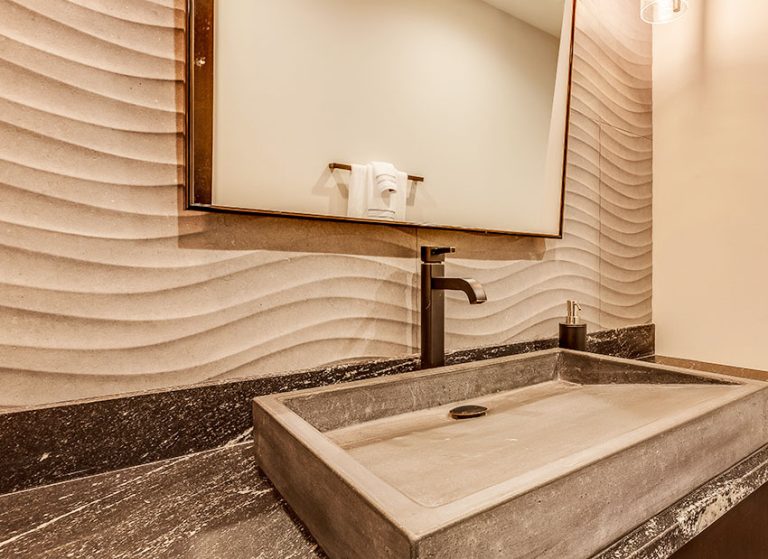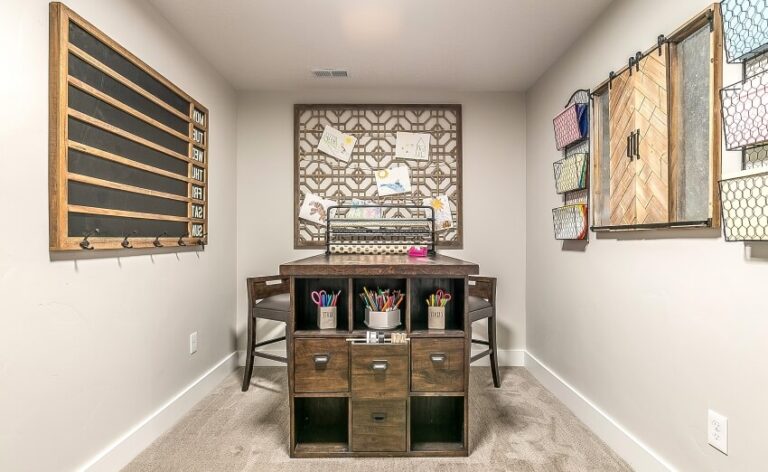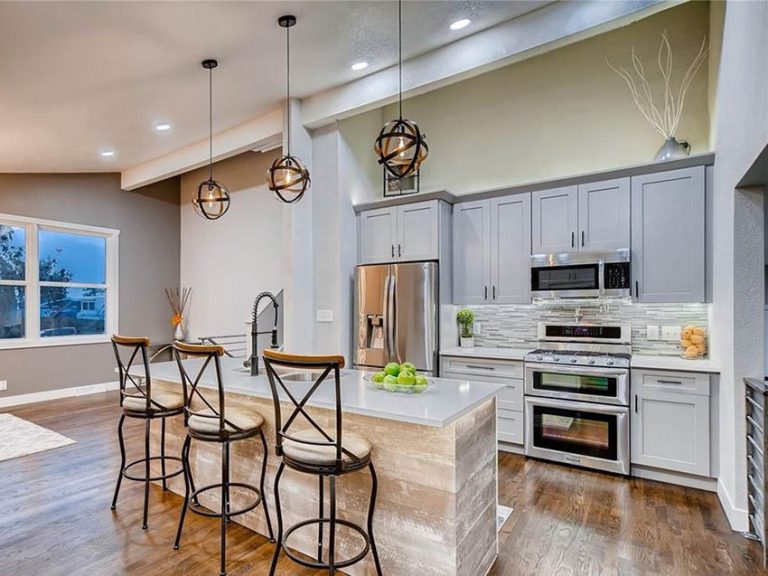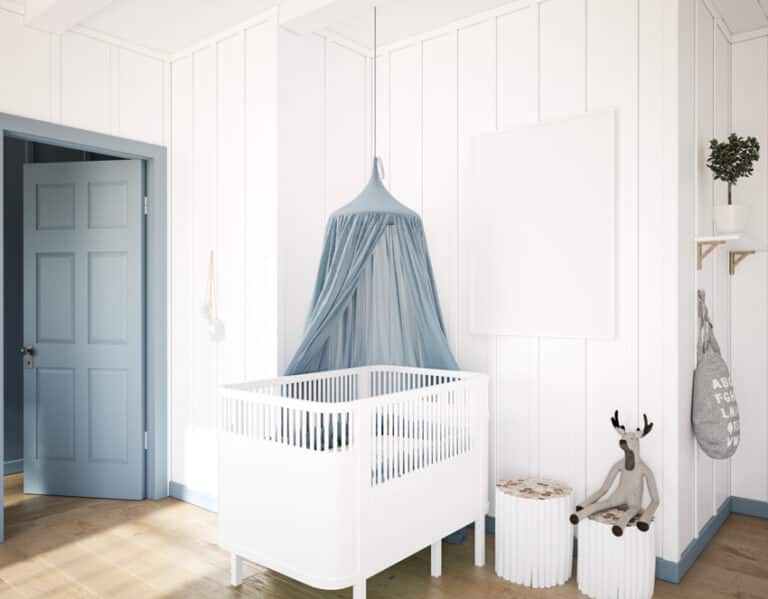Oak Hardwood Flooring (Popular Types & Design Options)
Solid hardwood flooring is a common choice of flooring material for most homeowners. Its warm, textured look adds a certain amount of character and class to any room it is used in. For the most part, oak hardwood flooring is the most popular species due to its availability and distinct traits, such as its appearance and stability.
As a flooring material, solid oak shows distinctive grains and deep, dark amber hues—all these cement its place as one of the most beautiful flooring materials available in the market. Within the genre of oak flooring, different sub-species, ways of preparation, and finishing methods and materials give homeowners and designers an even wider array of choices.
Its stability is another great trait that reinforces its use as flooring. Not only can it sufficiently support sufficient amounts of live loads in most building types, but its material makeup can withstand variations in temperature and humidity quite well. As such, you can choose to use it in your home regardless of whether you live in a place with a four-season climate or more tropical places.
Its viability as a construction material is also without question – century-old Victorian homes and other even older buildings often still have their original oak hardwood flooring intact and still as stylish as ever. There is very little room for doubt regarding the timelessness of oak hardwood flooring in the interior design world.
For its aesthetic variations, stability, and time-tested quality, oak hardwood flooring continues to be one of the most widely used flooring materials in the world. (This article is part of our larger types of hardware floors gallery)
Types of Oak Hardwood Floors
Oak hardwood floors give you the benefits of solid, long-lasting flooring materials as well as a truly timeless aesthetic that enhances any home space. In all its glory, this type of hardwood floor actually comes in different categories and types. The type you’ll eventually decide to go with will depend on your budget and your desired aesthetic.
There are some popular types of hardwood floors that make a killing in the market. They can be categorized according to species, their being unfinished or prefinished, and their brand or the mill they came from. Regardless, these hardwood floors are classic additions to an interior space.
Here are some popular types of oak hardwood floors for your consideration.
Prefinished Oak
The traditional method of installing this kind of hardwood flooring is putting them in as unfinished planks first and then later doing the finishing touches on them with stains, oils, and protective layers. As the construction industry and building technology have advanced, so have the installation methods of this hardwood flooring.
Suppliers have started offering hardwood flooring that has been prefinished and can be installed with treatments already done to them. These treatments make the finished product already protected against any unwanted stains, defects, and unnecessary moisture.
There are many advantages to using these hardwood flooring materials. First off is its often superior durability. This is due to the industrial application of the stains and finishes on the wood itself. With prefinished hardwood flooring, these treatments are done in the factory with industrial-grade sealers and machines.
These heavy-duty processes are seldom matched by the manual application of finish done after installation. As such, the finished product also lasts longer and need not be maintained as fervently as post-finished flooring.
Another main advantage is the time factor. With prefinished hardwood flooring, installation is as simple as laying the boards on the floor. No fuss will be needed after the fact since very minimal treatments have to be done after the installation itself.
Of course, this also translates to higher initial costs, but depending on the floor space, this could easily be displaced by the amount you save from not having to pay for the labor it takes to finish the floor.
Unfinished Oak
For unfinished hardwood flooring, the finishing work comes after the installation of the floors. This is traditionally how it is done, so most suppliers will have unfinished type in stock.
The largest and most apparent advantage of using unfinished hardwood floorboards would be its lower cost. Of course, this only counts if you don’t factor in the costs of finishing, but truly bargain-hungry homeowners can choose to do the finishing work themselves and save some money.
Another advantage is its flexibility. Since unfinished hardwood boards come in their rough, untreated form, the designer or the homeowner can make decisions on how they want the finish to look. They have their choice on how deep or how light the stains should be if they even decide to use stains. They could figure out the type of protective coating they would like for the floor on the fly.
Contractors are also known to favor unfinished floor style since tiny mishaps or accidents during construction might cause some defects or dents on the floors. With the floors unfinished, it is a relatively easy task to mask or correct those dents.
Oak Hand Scraped Flooring
When hardwood floor material started in the 1600s, it was commonplace to manually hand scrape the installer planks and boards to even out the elevation difference in the wood planks. Before power sanders had been invented, this was all that carpenters and builders at the time could do. With the advent of machine-assisted construction and more accurate mills, manual hand scraping became less of a necessity.
Still, people have come to associate the rough, imperfect texture of hand-scraped floor planks with a nostalgic feeling of being in old, historical houses. As time passed, hand scraping turned into a way to decorate the floor instead of a necessary way to even out the floorboards. Textured, hand-worked hardwood floors have a certain character and personality to them that many designers and homeowners want for their interior spaces.
There are many ways to execute hand scraping on a hardwood floor. You could choose to sand it, dent it, intentionally make holes, or scoop out some wood. The chosen method really depends on the tastes of the clients and the designers.
One obvious advantage of going for a hand-scraped look is that you need not worry about any blemishes or dents that will stand out since that’s the look you’re going for anyway. If you live in a household with regular rough or heavy activities happening, this type of decorative camouflage is a godsend.
White Oak Flooring
White oak is one popular species that is frequently used in house renovations and interior design spaces. Compared to other oaks, it has a more neutral and subdued hue with individual samples with very minimal color variations. As such, when getting white varieties, you very often get consistent color palettes. These colors range from light yellow tones to more rich amber brown ones.
Its grain is also straighter and more compact than other oak species. This flusher aesthetic makes it more attractive to many homeowners. The smoother texture also makes it so that white oak can be versatile enough to go with a plethora of design styles.
In the Janka hardness scale, this species is also slightly more durable at 1360. This makes it more resistant to any potential dent-causing impacts that would most certainly affect other wood species. With that, floors coming from this species can be suitable for high-traffic and high-activity areas such as hallways, living rooms, and dining rooms.
Red Oak Flooring
Red oak is another popular species of hardwood and is often compared to its white-colored cousin. Its color, as its name would suggest, ranges from a slightly rose-tinted yellow hue to warmer amber tones with a brown base. With color palettes like that, this species can be considered a warmer, homier alternative to other oaks.
Its grain is wider in comparison to others. It also has a more wavy quality, sometimes running in zigzags. This type of grain adds even more personality to the already bold wood. The more exciting grain pattern also helps hide dents and scratches better.
The hardness of this species scores 1290 on the Janka hardness scale. Even with a slightly lower score than its lighter-colored cousin, red oaks are still consistently the more popular choice of the two due to its appearance and warmth. Traditionally, it’s also the species that is used more often.
French Oak
French oak is a bit of a luxury material for hardwood floor covering. It’s the same species of wood used in France for wine barrels. As its name suggests, it is a wood species that is imported from France.
It has a higher tannin composition than any other species, which reacts significantly better to aging than most timber species. It develops a lovely darkening of its hue, and it ages magnificently. The patina, interesting crack and knot patterns, and the beautiful grain of the wood make it one of the most sought-after materials in the market.
For even greater effect, designers and homeowners can choose to stain their hardwood floors for an even richer, warmer tone. Although even if you leave it in its natural hue, it’s still quite a sight to behold.
Bruce Solid Oak
Bruce hardwood floors have become a household name in the construction industry due to their time-tested quality and the plethora of design options available. Their hardwood floors are available in different species of oaks, colors, and grain patterns. All you have to do is look through their wide catalog of available hardwood floor materials and pick out the one that’s best for you.
Bruce solid oak hardwood floors can also come in different finished states. They can be pre-finished, unfinished, or hand-scraped, according to your preference.
Cherry Oak
The cherry oak is a type of red hardwood that is quite sought after as a floor-covering material. Unlike other types of red oak, this wood variety is larger and of a better build. It has a strong wood composition and a relatively straight form, making it more than ideal for quality milling.
Because of its top-notch form and quality, Cherry oak is considered one of the top-tier red oaks. With its heavy and coarse texture, it is used for finishing the interior, general construction, and even joineries and furniture. Being a type of red oak, this lumber is also of a reddish-brown hue.
Oak Wood Flooring Sizes
When talking about wood sizes, the first thing to know is the difference between nominal sizes and actual sizes. When lumber is milled and smoothed, it still has to undergo a drying process that takes out the moisture within its fibers. The nominal size refers to their dimensions before the drying process is done. The actual size will have dimensions that have a quarter to a half-inch difference from the stated nominal size.
There are standard tables and computations to give you the actual size of a stated nominal size, but it’s best to just ask your supplier about the sizes yourself for a clearer and more accurate measurement.
Another topic worth covering is the standard dimensions and measurements of hardwood lumber. Hardwood lumber, in general, will be sized according to how many of its sides are surfaced. That is, how many of its sides are finished and smoother such that the saw marks from the mill are no longer visible?
For the most part, and in North American mills, hardwood lumber thicknesses will be specified in quarters of an inch, usually rounded up. These vary from 5/16 inches to 3 ¾ inches (actual size, not nominal).
Hardwood widths are a bit of a different story, with widths that usually come in more or less random sizes, from 2-1/4 inches wide to 6 inches wide and more. Lengths are the same as widths, with random measurements anywhere within the range of 12 inches to 84 inches. The current consumer trend dictates that 3-1/4 inch wide boards are the most commonly available widths but check with your local supplier for their available width and length sizes to be safe.
For the sake of nomenclature, boards with thinner widths are typically called strip oak flooring, while wider widths will be called planks.
Oak Plank Floor Prices
Retailers and suppliers will commonly charge oak hardwood flooring purchases by the square foot. Oak flooring will set you back $2.50 to $6.00 per square foot. This is for local, unfinished oak flooring; if you opt for imported variations or pre-finished hardwood, they will most likely cost more. Pre-finished hardwood will usually set you back $4.00 to as high as $12.00 per square meter.
Regarding prices, oak hardwood flooring will come in several different grades of quality. For the most part, you get what you pay for. If you opt for a grade at the lower end of the price spectrum, you’ll have to make do with flooring with more knots, imperfections, and little defects.
On the other hand, the more expensive oak floors will also probably have different treatments to ensure their quality and longevity. These grades, in order of the least expensive to the most expensive, are the following: cabin grade, traditional or antique grade, exclusive grade, better grade, and clear grade. Aside from grades, the species of oak will also determine the quality and price of your flooring.
For the most part, oak hardwood floors are fairly more affordable than most people would think. However, before bringing out the checkbook to spend on the floors, you must consider other “hidden” costs behind setting up these beautiful hardwood floors in your home.
The first would be labor. Installing hardwood flooring is no easy task. It can be tedious and highly technical. Some can opt for going with the do-it-yourself route, but that’s more suited to homeowners with previous contracting or construction experience. Plus, doing it yourself would take much longer than having more than one worker help.
Having professionals install unfinished or prefinished wood will cost about $3 to $4 per square foot. Having them finish it will cost up to $2 per square foot more. Try to look at your budget, time frame, and complexity of the work to make a sound decision for the installation.
Another factor to consider is the amount of time you will have to stay out of the house for the installation to be done. Some opt for staying at a local motel, hotel, or inn for a few nights, just until the renovation is being done.
For a more budget-friendly alternative, you could also consider staying at a kind friend’s or neighbor’s home for a little while. In any case, don’t forget to consider these things when deciding to put in oak hardwood floors in your home.
Related Flooring Interior Design Articles You May Like:
Types of Flooring Materials – Engineered Hardwood Flooring in Kitchen – Kitchen Flooring Ideas – Eco Friendly Flooring

